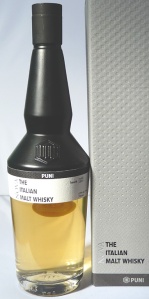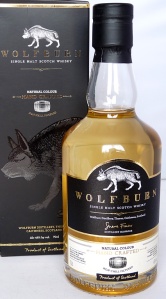Bought: Aberdeen Whisky Shop, 21st May 2020
Ratings:
85/100 – Whiskybase (from 1 member vote)
Dalmunach is one of the newest distilleries on the Scottish whisky scene that’s owned by a big players in the industry, Pernod Ricard (Chivas Brothers). The ultra-modern distillery was built in 2014 on the site of the former Imperial distillery (also owned by Pernod Ricard), which was demolished in 2013 simply because it wasn’t economical to be refurbished. Dalmunach distillery is in Speyside not far from the Dailuaine distillery. The name ‘Dalmunach’ comes from a nearby pool on the River Spey.
In August 2019 I spotted on a whisky forum that 4-year-old bottles from the new Dalmunach distillery were now on sale as part of ‘The Distillery Reserve Collection’. Unfortunately this bottle was only available in distillery shops belonging to Pernod Ricard. As fortune would have it I was intending to visit one of these, the Strathisla distillery in Keith but not until October. Before making plans I contacted the distillery to ask about the Dalmunach bottle but sadly they’d sold out. At 64.5% it was going to be hot but a nice chance to try something new. Currently this bottle scores 82.1/100 on Whiskybase from 11 member votes.
I had to wait until May 2020 before getting my next chance to claim a bottle of Dalmunach, this time from the Aberdeen Whisky Shop. This exclusive release was put together by the independent bottler Duncan Taylor as part of their ‘The Octave’ series. Of the 22 releases of Dalmunach listed on Whiskybase, 15 of them have come from Duncan Taylor, 14 of which as part of ‘The Octave’ range. As the name suggests, the whisky has had its final phase of maturation in a smaller octave cask (in this case ex-sherry) to “enhance its hue, taste, form and character”.
The majority of ‘The Octave’ releases score in the mid 80s out of 100, which goes to validate Duncan Taylor’s 40+ years of experience of small cask maturation. For my 3-year-old example (5 months spent in an octave cask) a review says “needs more ageing” but adds “looking forward to trying older Dalmunach in the future”. Most definitely!















































































































































































































































































































































































































































































































































































































































































































































